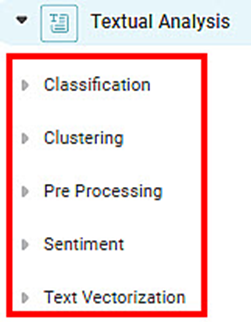What is Textual Analysis
Textual analysis is an automated process to interpret textual content and derive meaningful data from it. It is a qualitative analysis performed using AI-powered natural language processing (NLP) tools. These tools help understand the correlation between the text and the context in which they are produced. There are several trained algorithms in machine learning (ML) for automated analysis of textual data.
Why is Textual Analysis required
Textual analysis is vital in industry and academia to analyze unstructured business and academic data. With the advent of social media, its commercial exploitation by businesses for the promotion of their products and feedback received from customers is increasing every day.
Textual analysis is an effective way to gauge the popularity of the product as well as understand the sentiment of the potential customers regarding their product.
How is Textual Analysis done in rubiscape
It is not possible to manually read, analyze, and tag textual data because of its humongous size and its dynamic nature. The results delivered will be inconsistent, non-scalable, and enormously time-consuming.
In rubiscape, users can perform precise textual analysis and deliver accurate results in a short period. rubiscape contains an array of algorithms and techniques for all related tasks like pre-processing, clustering, classification, sentiment analysis, and text vectorization. Using dedicated dashboards, we can visualize this data to draw important inferences.
rubitext provides various algorithms to perform textual analysis. These algorithms are categorized as,
- Classification
- Clustering
- Pre Processing
- Sentiment
- Text Vectorization
In the task pane, click Textual Analysis.
For more information, refer to Textual Analysis algorithms.
